June 14, 2017
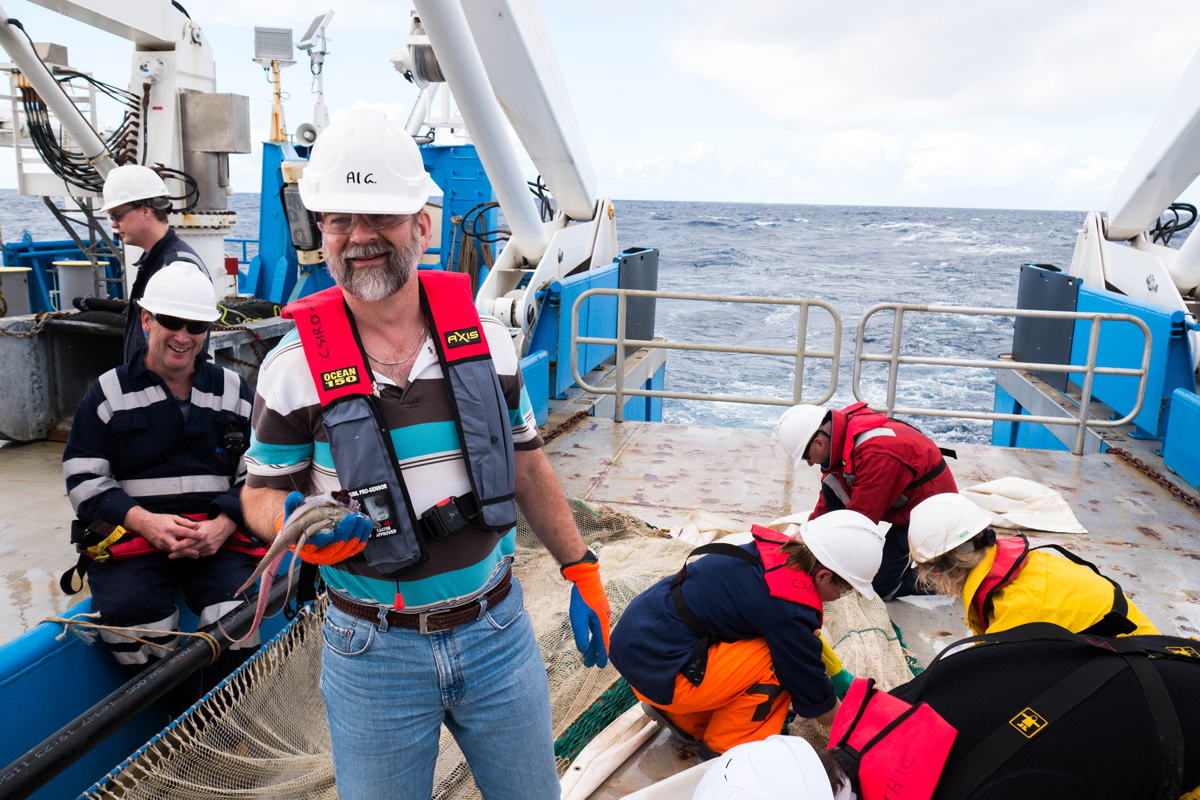
 Day 30: Alastair Graham, CSIRO Australian National Fish Collection
Day 30: Alastair Graham, CSIRO Australian National Fish Collection
I firmly believe that when I am doing my job as Collection Manager properly, then researchers using the Australian National Fish Collection (ANFC) can then do theirs.
Our collection’s 151 000 specimens have been gathered from all over Australia and the Indo-Pacific. They are retained as a record for a particular species’ occurrence at a particular place and time. Many species cannot be identified from photographs alone; often the actual specimen will need to be examined to determine other characteristics such as gills and teeth. As there are more than 5000 species that are found in Australian waters alone, sometimes there may be only one person in the world who can accurately identify a particular species!
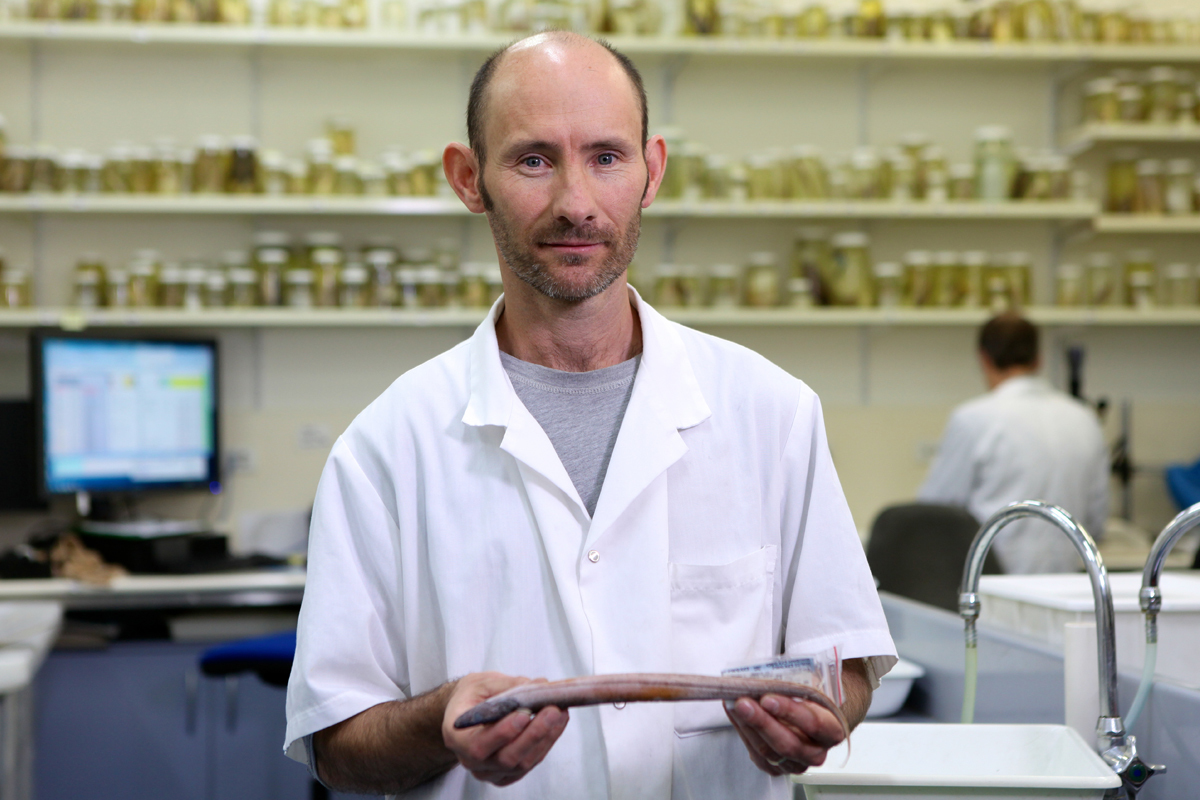
Fixation and preservation
The primary objective of fixation is to preserve the morphology of the specimen’s tissue in a condition as near to that existing in life. Fixation both inactivates intracellular enzymes, thus preventing ‘self-destruction’ of the tissues, and inhibits putrefaction, which is caused by bacterial and fungal activity.
Preservation is the process of maintaining a specimen in this fixed state for an extended period. It is intended that specimens lodged in a collection, such as the ANFC, will be retained indefinitely. If specimens are fixed and preserved correctly, then they will be available for researchers to examine for hundreds of years.
Most fish are fixed in formalin, which is a more effective fixative than ethanol. Occasionally specimens are fixed in ethanol, particularly if they are very small and cannot be easily identified. Fixing in ethanol allows future DNA extraction, which is generally difficult in formalin-fixed specimens.
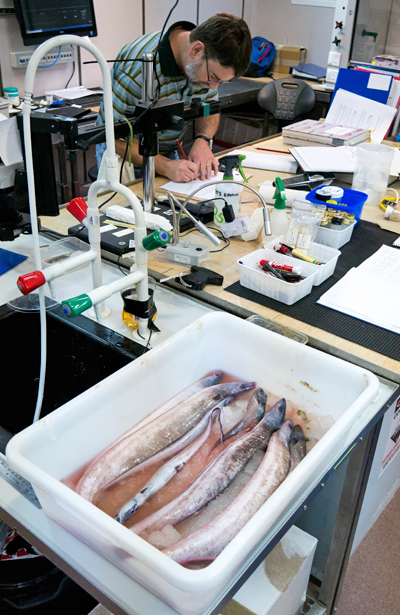
Data recording
Besides fixation and preservation, data recording is the most critical aspect of collection management. Even more critical than the identification of the specimen, which can be checked and re-checked at any time in the future. If a specimen’s collection data is not recorded correctly at the time of capture, any errors can be perpetuated forever. This may result in issues such as incorrect reporting of the specimen’s distribution (locality and depth).
Specimens lodged in a collection are generally registered. This involves allocation of a unique 'registration number', which links the specimen with all of its data, including collection locality information, identification, attributes (for example, size and sex), and details of any tissue samples and photographs.
Tissue sampling
Muscle samples are removed from specimens prior to fixation, as formalin-fixation degrades the DNA and makes DNA extraction difficult. Specimens lodged at the ANFC have been tissue sampled for the last 20 years. Our tissue samples are generally stored at -80°C, which prevents the degradation of the tissue, although some are stored in ethanol.
The samples are used for various genetic analyses including confirmation of species identifications and to guide taxonomic work on the classification of different fish groups. Genetic methods are constantly changing, so it is a mystery what researchers will be doing with these samples in another 20 years.
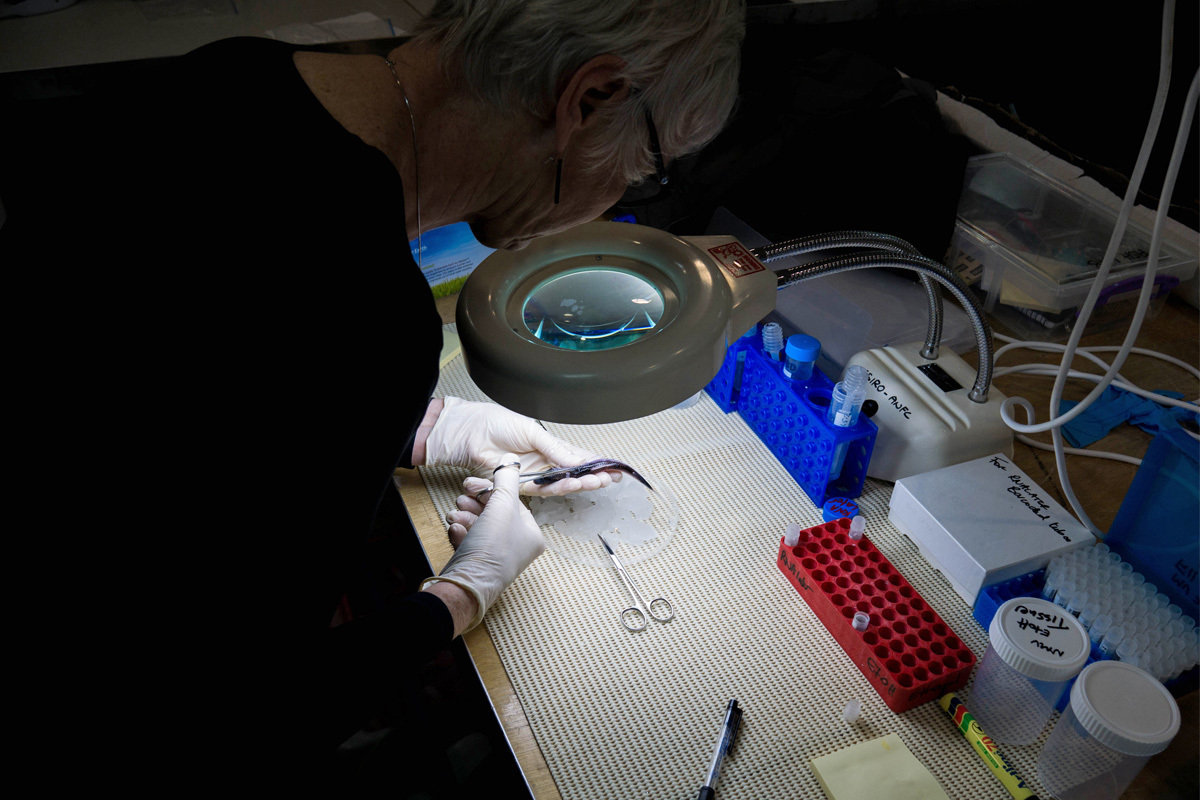
Photography
Specimens are photographed prior to fixation, to capture their fresh colours and features. Fixation often causes lighter colours (such as yellow, orange, red and green) to fade, while the darker colours (such as brown and black) remain. Specimens are pinned to a foam board to show their details such as the colour, position and extent of fins and other structures such as chin barbel. These structures are then painted with formalin to set them in place. Then the pins are removed prior to photography.
A collection manager’s duties at sea are the same as on land, except the workspace is constantly moving with the ship, up and down, and from side to side!
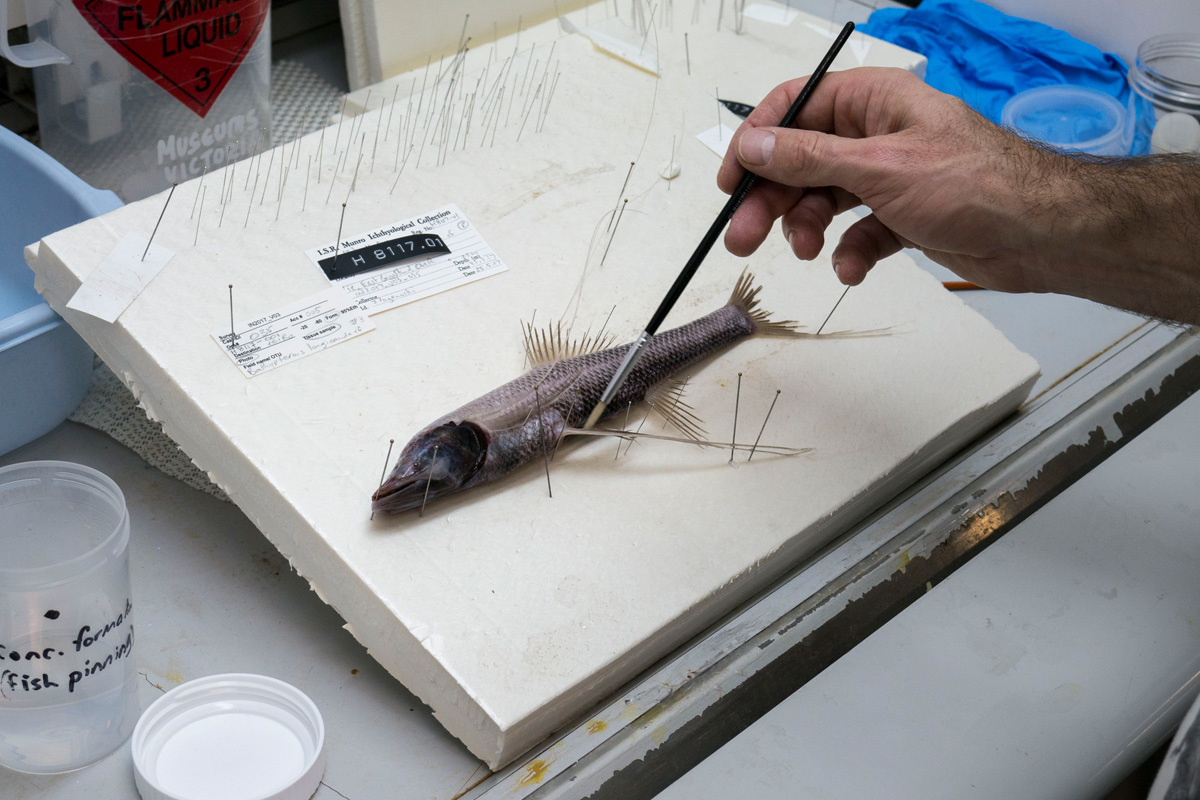
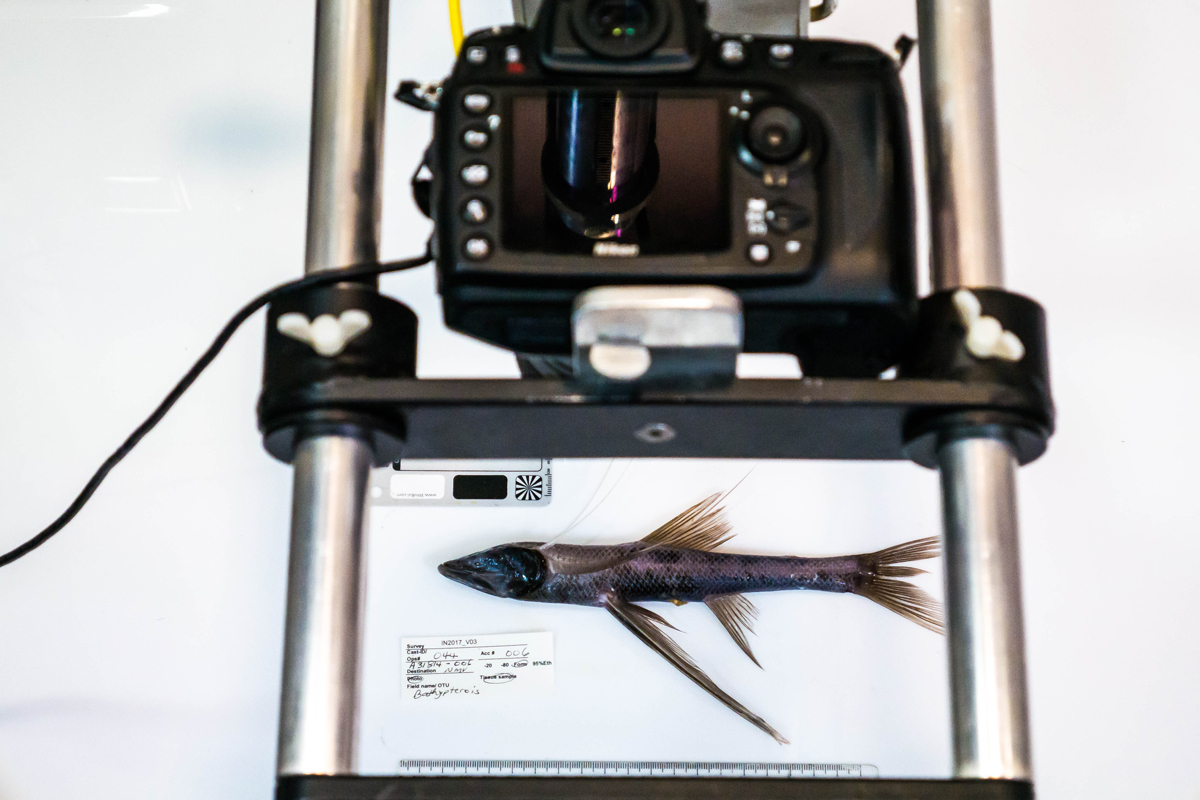
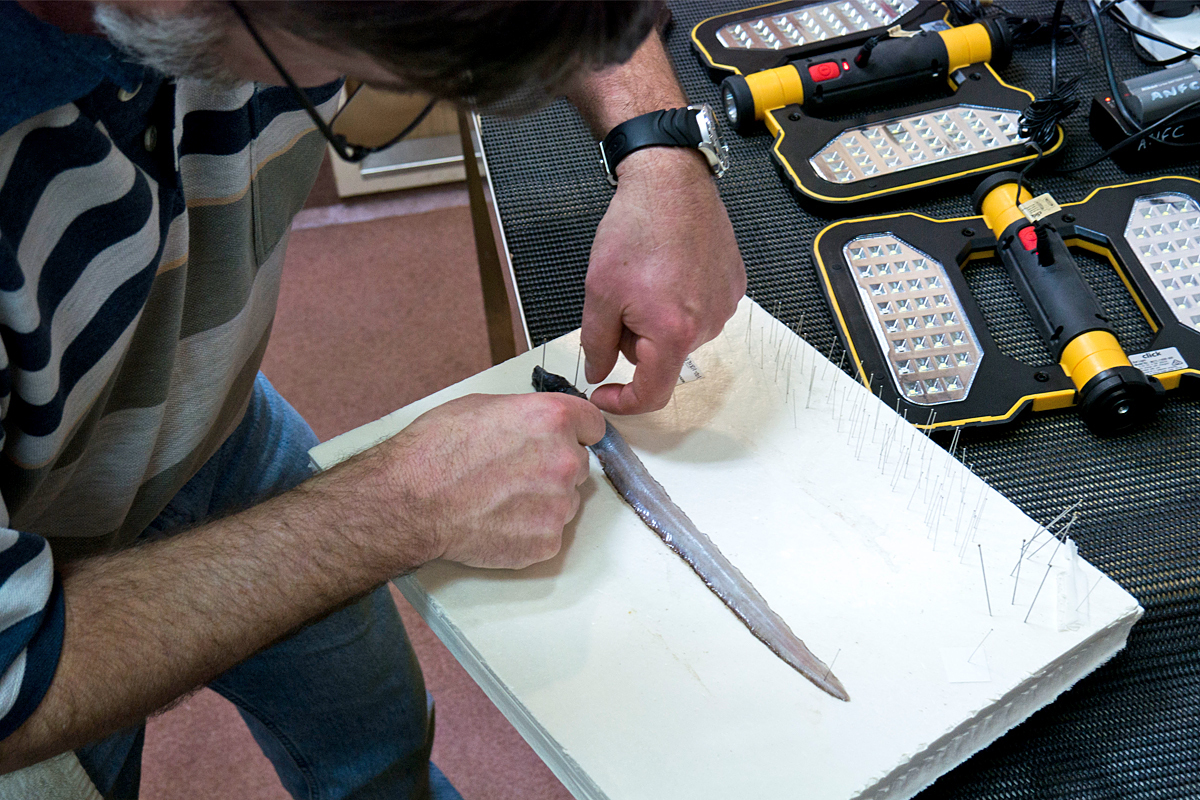
Read more
- Log in to post comments
